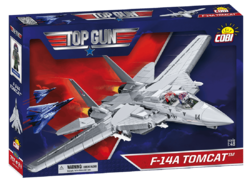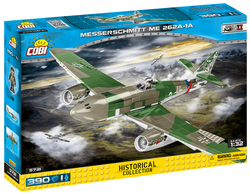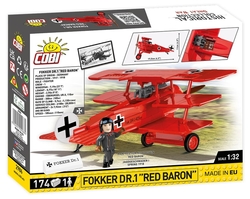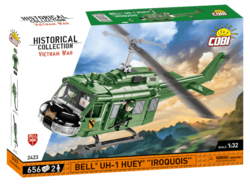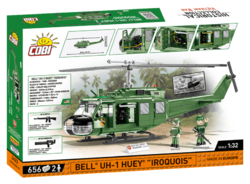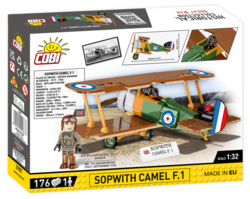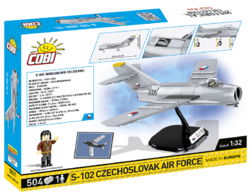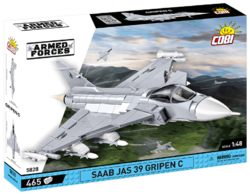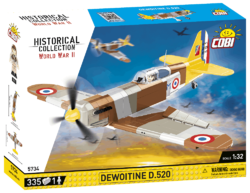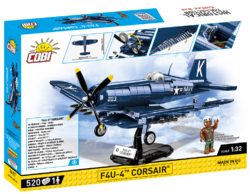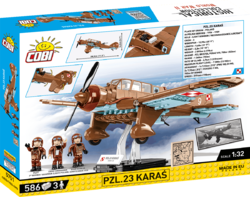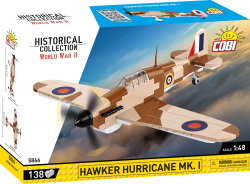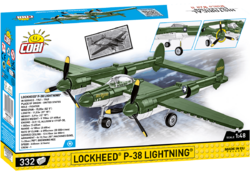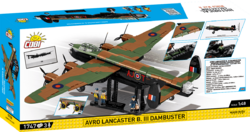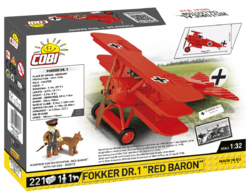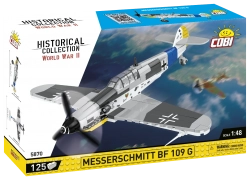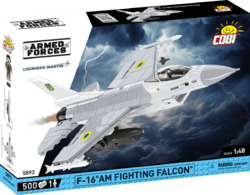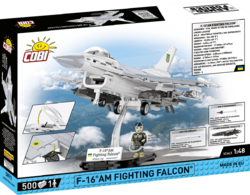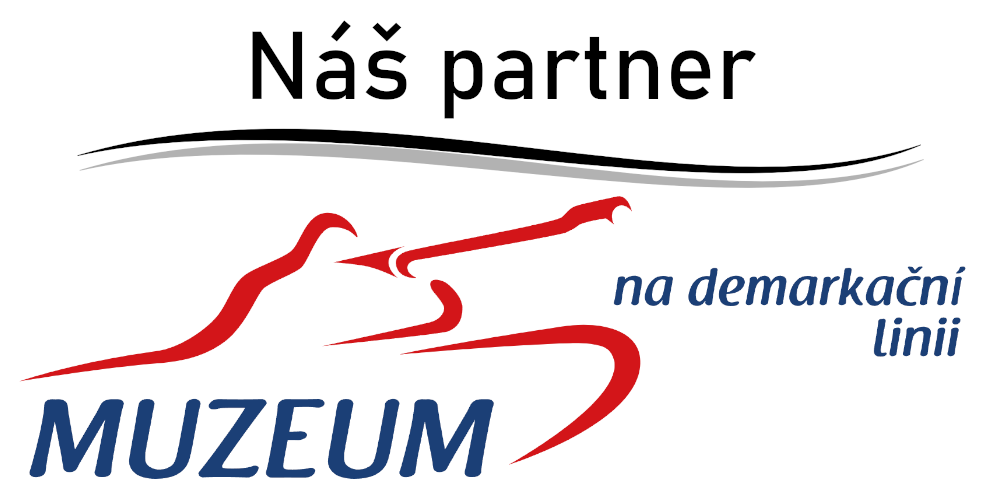| List Number: | COBI-5754 |
| EAN: | 5902251057541 |
| Warranty: | 24 months |
| Manufacturer: | COBI |
| Loyalty Points: | 12 |
| Price excluding VAT: | 1 608,29 Kč |

You know that:
- In 1933, the Reich Air Ministry issued a competition for the development of a bomber aircraft called the "Schnellbomber", which was supposed to be as fast as attack fighters.
- All documents referred to the new machine as an aircraft with special equipment to keep its true purpose hidden from the world.
- To achieve (at the time) high speeds, the fuselage was designed as a lightweight all-metal structure with a slim aerodynamic shape, which earned the aircraft the nickname "pencil".
- Production of the prototype began in April 1934, and in just 6 months the bomber was ready for its first flight.
- Test pilot Egon Fath made a number of flights, but the stand was still not ready. The design required a number of modifications and improvements.
- The final flight took place only in 1937.
- In addition to the military version, a civilian version was created for the needs of the Lufthansa airline as a special for the transport of 6 people and mail. Lufthansa rejected all these machines due to lack of space in the narrow fuselage.
- In many versions, about 2,139 units were produced until 1940, and together with the Heinkel bombers, they formed the backbone of the German bomber air force.
- Several dozen units were also produced under license in Yugoslavia. In 1938, deliveries of German engines were delayed, so the Yugoslav factory turned to the French manufacturer Gnome et Rhone. But the engine did not achieve the promised performance or quality.
- The Dornier DO 17 participated in practically all German war operations. During the Battle of Britain, the obsolescence of the machine, which was not equipped to deal with modern British fighters, was already fully manifested.
- More of a desperate attempt than an effective weapon, a rear gunner-operated flamethrower was installed to destroy enemy fighters. A mixture of nitrogen, hydrogen and oil, driven by a turbine through an exit nozzle, was intended to burn the pursuing aircraft to ashes. There was not enough oxygen at operating altitudes, and only a stream of oil came out of the nozzle, which could stain the windshield of an enemy aircraft as much as possible.
Technical parameters:
- dimensions: wingspan 18 m, length 15.8 m, height 4.55 mempty weight 5,209 kg, take-off weight 8,850 kg
- drive unit 2 x BMW Bramo 323P Fanfir radial engine 750 kW each
- cruising speed 360 km/h
- top speed 425 km/h
- climb rate 5.02 m/s
- maximum flight level 8,200 m
- volume of fuel tanks 1,540 l
- combat range 1,160 km
- armament 6x MG 15 7.92 mm machine gun + 1000 kg of aerial bombs
- crew 4
From the memoirs of Dornnier DO 17 crew member Hans Braun:
"It was our last mission over the Soviet Union. It was in July 1941. Our targets were railway junctions and bridges near Smolensk. It was morning and the sky was clear. We were flying at about 4,000 meters and we saw several Soviet fighters below us. They were I-16s and I-153s, old and slow planes that could not compete with our Bf 109s and Bf 110s. Our commander, Major Muller, ordered us to continue our mission and ignore them. But one of them dared to attack us from the front. Our front gunner opened fire and tried to shoot him down. But the I-16 was surprisingly agile and evaded our shots. Then he got very close to us and fired a round into our fuselage. It hit the fuel tank, which immediately caught fire. The pilot, Oberleutnant Schneider, lost control of the plane. We were going down. We tried to parachute out, but it was too late. The plane crashed into the woods and we crashed with it. I survived only by a miracle, it wasn't my time yet."
| Recommended age | 10+ |
|---|---|
| Version (series) | 10/2023 |
| Number of pieces | 1383 pcs |
| Package weight | 1775 g |
| Scale | 1:32 |
| Number of figurines | 2 pcs |
| Dimensions after assembly | 57,5 x 49 x 13 cm |
| Box dimensions | 60 x 32 x 7,5 cm |
| Contains luminous blocks | No |
| Material | Plastic |
| Collection | World War II |
| Compatible with other brand of kits | Yes |




































































